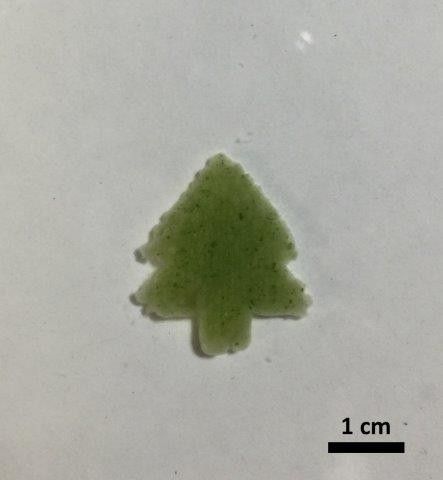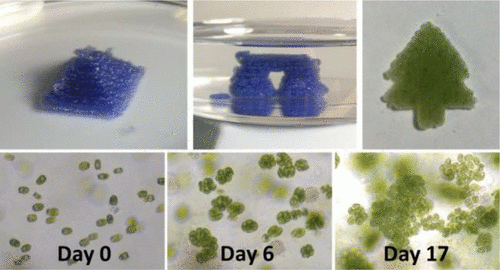3D Printed Microalgal Silk Structures for Air and Water Purification
Published on by Water Network Research, Official research team of The Water Network in Technology
Microalgae are tiny but important organisms, producing oxygen for us to breathe. But scientists have also used the microscopic, aquatic creatures to make biofuels, food, and pharmaceuticals, as well as to capture carbon dioxide from power plants and turn it into oxygen.

A 3D-printed silk hydrogel “tree” hosts oxygen-producing microalgae (green).
Image Credit: Adapted from ACS Biomaterials & Engineering 2019, Source: ACS
Now, with the help of silkworm cocoons, researchers reporting in ACS Biomaterials Science & Engineering have made an artificial home to support microalgae growth and photosynthesis for environmental applications.
Someday, microalgae might be used for purposes ranging from wastewater cleanup to the purification of indoor air. But first, scientists need a way to keep microalgae in the proper place to do their jobs, without floating away or contaminating natural water systems. Researchers have developed various materials to immobilize the microorganisms, but they have limitations, such as possibly being toxic, or not being strong or stable enough. David Kaplan and colleagues had previously developed a silk hydrogel that could support mammalian cell growth, and they wondered if it would also work for microalgae.

Graphical abstract: Adapted from ACS Biomaterials & Engineering 2019, Source: pubs.acs.org
To find out, the researchers diced up silkworm cocoons, dissolved the fiber and combined it with a thickening agent to produce a 3D-printable ink. Then, they added microalgae. The team 3D-printed the microalgae-containing ink into various shapes, such as a tree, in a container of seawater. The water contained a small amount of hydrogen peroxide, which solidified the ink into a gel. The silk structures supported microalgae growth for at least 4 weeks and photosynthesis for more than 90 days. The results suggest that the system could be suitable for environmental applications, such as indoor air improvements and carbon dioxide reduction, the researchers say.
Reference:
Siwei Zhao, Chengchen Guo, Allison Kumarasena, Fiorenzo G. Omenetto, David L. Kaplan, "3D Printing of Functional Microalgal Silk Structures for Environmental Applications", ACS Biomaterials Science & Engineering, July 2019, DOI: 10.1021/acsbiomaterials.9b00554
The authors acknowledge funding from the National Institutes of Health.
Source: ACS
Media
Taxonomy
- Micropollutants
- Algaecides
- Microbiology
- Algae
- Algae Treatment
- Water Purification
- Air Purification
- Cell and Molecular biology, Plant biology, Algal biology